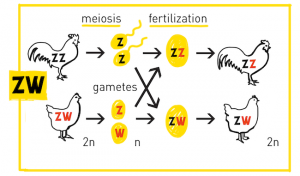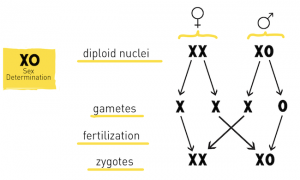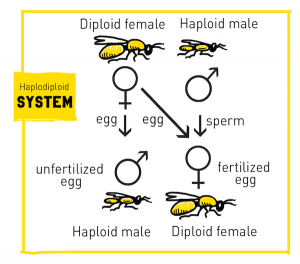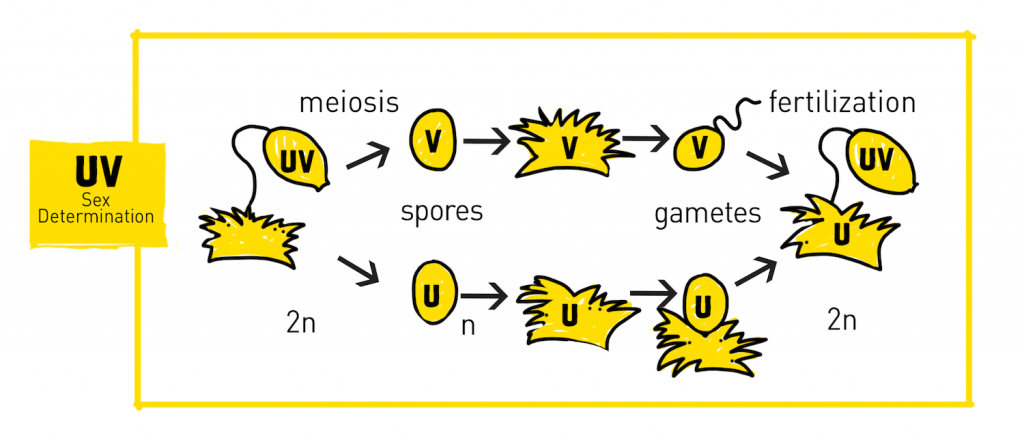An Everyday DNA blog article
Written by: Sarah Sharman, PhD, Science writer
Illustrated by: Cathleen Shaw
Lately it seems like my social media feed is filled to the brim with gender reveal parties where an expectant couple learns the sex of their baby. Party guests look on as the happy couple cuts into a cake or pops a balloon to reveal pink or blue confetti.
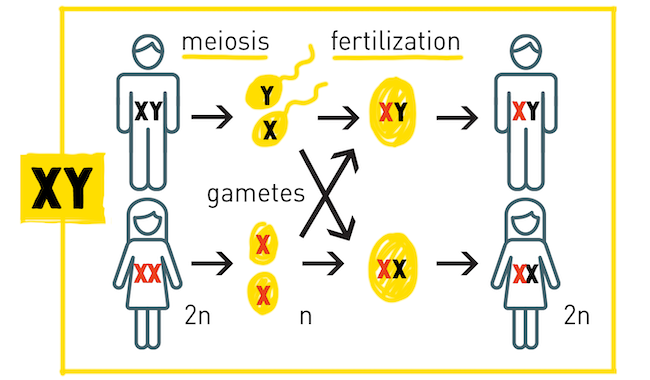 Most of us were taught as early as grade school that there is a 50/50 chance that a human baby will be a male or female. Later in our education we learned that an X chromosome from mom and an X chromosome from dad makes a genetic female, while an X chromosome from mom and a Y chromosome from dad makes a genetic male.
Most of us were taught as early as grade school that there is a 50/50 chance that a human baby will be a male or female. Later in our education we learned that an X chromosome from mom and an X chromosome from dad makes a genetic female, while an X chromosome from mom and a Y chromosome from dad makes a genetic male.
The human sex determination system is the most familiar to us, but there are several other types of sex determination across the tree of life. The genetic sex of some organisms like turtles and snakes is determined by environmental cues like temperature, pH, or social conditions. However, many more organisms use genetics to determine who becomes a female or a male, just like in humans. Let’s learn about some of the types of genotypic sex determination.
Genotypic sex determination
Reproduction is the process by which organisms create offspring. There are two main types of reproduction: sexual and asexual. For the purposes of this discussion, we will focus on sexual reproduction.
Sexual reproduction requires two parents, one male and one female. Each parent contributes a sex cell, called a gamete, that has half of the DNA as a normal body cell. In most cases, the male cell is called a sperm and the female cell is called an egg. The cells come together to form a zygote in a process called fertilization and the zygote later develops into an embryo.
Within the sex cells are one copy of all of the chromosomes from the parent, including one sex chromosome that specifies whether an individual will be genetically male or female. This system of sex determination is called genotypic sex determination and occurs in a majority of species, including humans. There are several types of genotypic sex determination that we will explore below.
XY sex determination
- The XY sex determination system is found in humans, most placental mammals, as well as some insects, snakes, fish, and plants.
- In this system, the genetic sex of an offspring is determined by a pair of sex chromosomes, always an X from the mother, and either an X or Y from the father.
- The sex chromosome from the father is considered the sex determining chromosome because it ultimately determines whether the offspring will be genetically male or female.
- A gene called SRY on the Y chromosome initiates the release of testosterone and the formation of male sex organs. SRY is a transcription factor that can turn on the expression of other genes, serving as a master switch to turn on the suite of “male” genes in a developing organism.
ZW sex determination
- The ZW sex determination system is found in birds, amphibians, some reptiles, and plants like willow, pistachio, and strawberry.
- In this system the genetic sex of an offspring is determined by a pair of sex chromosomes, always a Z from the father, and either a Z or W from the mother.
- The ZW system is opposite of the XY system in that the mother’s sex chromosome determines the genetic sex of the offspring.
- Just as the mammalian Y chromosome carries the male-determining SRY gene, the bird W chromosome carries similar master switches FET1 and ASW, which are necessary for female development of the offspring.
XO sex determination
- The XO sex determination system is found in insects like true bugs, grasshoppers, and locusts.
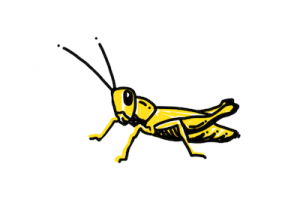
- Females have two X chromosomes (XX) and males simply carry a single X, the “O” in “XO” indicates the absence of the second sex chromosome.
- Males produce two types of sperm, half carrying a single X chromosome and the other half carrying no sex chromosome at all.
- Eggs fertilized with a sperm carrying the X chromosome will be genetically female, while eggs fertilized with a sperm carrying no sex chromosome will be genetically male.
Haplodiploid sex determination
- The haplodiploid sex determination system is found in several social insects like ants, bees and wasps.
- Females have a full set of 32 chromosomes and males are haploid, having only 16 chromosomes.
- Unfertilized eggs develop into males while fertilized eggs develop into females. In this way, it is possible for a male to have a grandfather and grandsons but not a father or sons.
UV sex determination
- The UV sex determination system is found in Bryophytes (mosses, liverwort, hornwort) and some algae.
- This system is haploid—each individual has only one sex chromosome with females carrying a single U and males carrying a single V.
- Unlike the XY and ZW systems, both the U and V chromosomes in the UV system are sex determining.
- In Bryophytes, haploid spores having a U or a V grow into offspring and then the union of eggs and sperm within these offspring allow them to produce more spores.
So, it seems like we know a lot about these systems—why are scientists still studying them?
Understanding the different types of sex determination systems is critical to the survival and evolution of sexually reproducing organisms. While scientists know a lot about existing systems, sex determination systems can rapidly evolve from one system to another.
In organisms other than humans, the genetic sex of offspring might not be revealed with confetti and a big celebration but it is just as important. For example, in crop plants, the sex of individual plants is important for food production because in many crops, like melon, squash, strawberries and grapes, only female flowers make fruits.
At the HudsonAlpha Institute for Biotechnology, the lab of Alex Harkess, PhD, Assistant Professor in the Department of Crop, Soil, and Environmental Science at Auburn University and a Faculty Investigator at HudsonAlpha, studies plant reproductive systems and sex determination systems to help breeders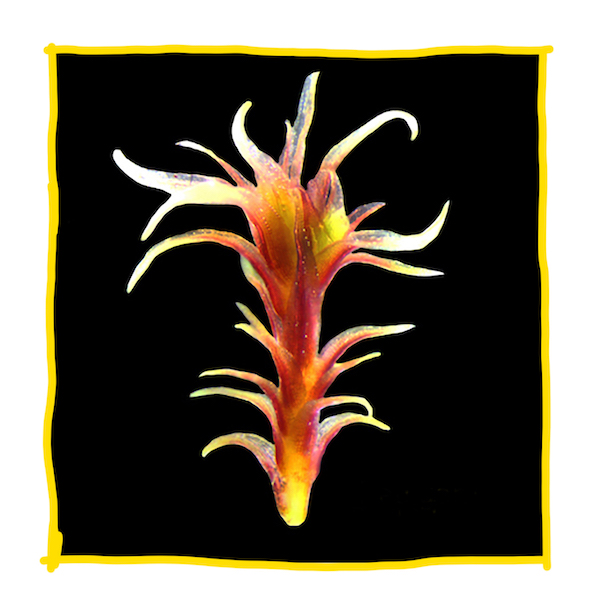 and growers produce more robust, durable crops.
and growers produce more robust, durable crops.
Sarah Carey, PhD, a postdoctoral researcher in the Harkess lab, studied moss UV sex chromosomes for her graduate thesis. Part of her study was recently published in Science Advances. Carey’s study found that despite the fact that fire moss sex chromosomes are older than the dinosaurs, they have maintained a lot of genes—many of which have been evolving “maleness” or “femaleness” over time.
The ability to look at purely male or female genes in these moss may have big implications on the plant world as a whole. Many of the genes on the moss sex chromosomes are known to control fertility in flowering plants and crop plants. Control of reproduction in crop plants is important for food production, and the moss genes may provide new tools to boost female or male linked function.
By gaining an even deeper understanding of sex determination systems, scientists hope to help plant breeders more efficiently sex their plants earlier in their lifespan so that those that are commercially valuable, like male asparagus which live longer in fields, can be selected for. Who knows, maybe someday we will see farmers throwing sex reveal parties in the fields for their crops.

